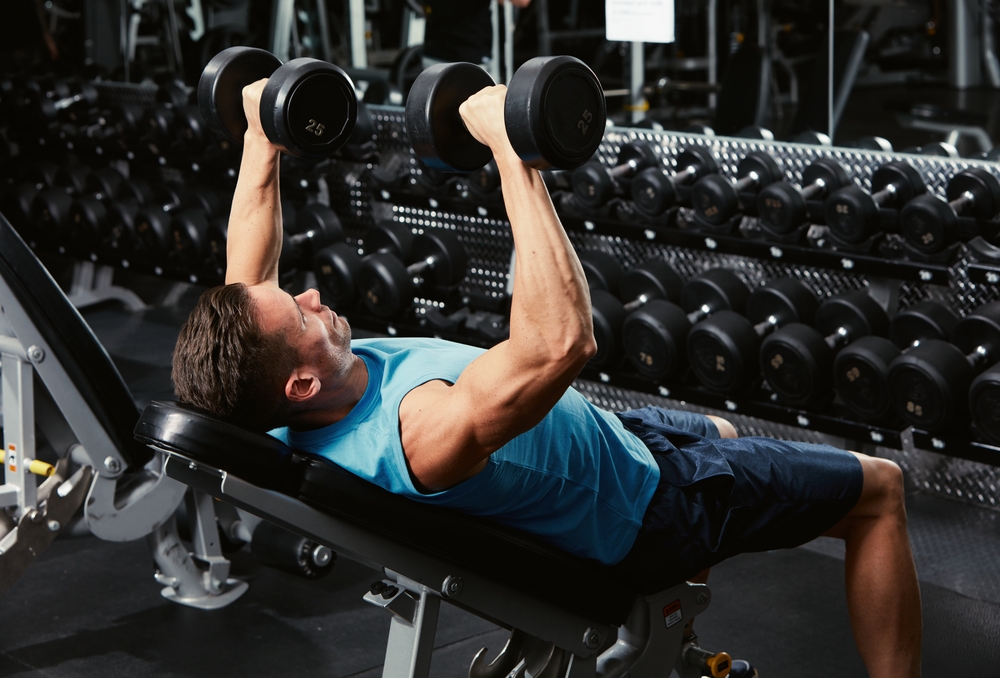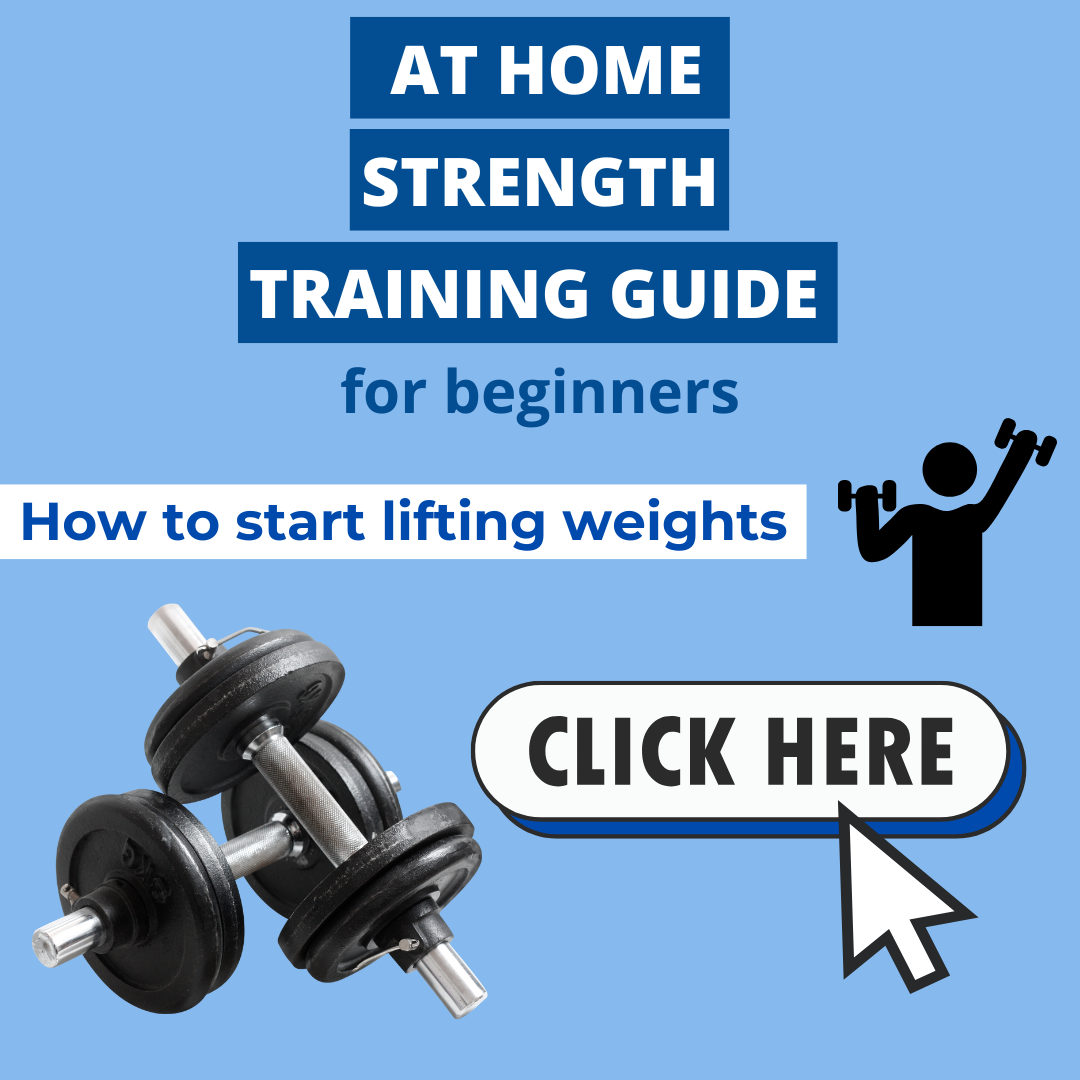When Should You Switch Up Your Workout Routine?

To optimize your results, lifting heavy during your workouts is an absolute MUST.
Actually put some weight on that bar and stick the “lighter weights for reps tones your muscles” false narrative where it belongs…
In the trash.
Lifting heavy keeps the intensity high, which means you don’t have to spend forever and a day in the gym.
But that still leaves one question unanswered and that’s when to switch up your workout routine?
Should you be doing a new workout every single day?
Every week?
Every month?
And when you do decide to switch up your workout routine, what variables should you even change?
You’ll get answers to all that and more in this post, but first…
Why should you switch up your workout routine, anyway?
1. You’ll decrease the likelihood of overuse injuries
I want you to picture a small crack in a dam.
At first, the crack is barely noticeable and the dam does a good job of not letting much water seep through.
But over time, as more pressure starts to build little by little, the crack gets larger and larger.
And eventually, the dam breaks.
That’s how overuse injuries play out when you don’t switch up your workout routine.
Repeatedly performing the same movements puts stress on the same muscles over and over… AND OVER again.
Gradually, your body just reaches its breaking point.
But similar to the damn, this won’t happen overnight.
Usually, it starts with a small injury–a little back pain here or a sore knee or achy shoulder there–that festers into a greater injury over time.
2. You’ll create a more proportionate, well-rounded physique
Your workouts are kind of like investing…
It’s not wise to put all your eggs in one basket.
Rather, you get the best results when you diversify or have variety.
In this case, “diversifying” is when you switch up your workout routine from time to time, allowing you to create a more well-rounded, proportionate physique.
For example, you can:
- Work your muscles from different angles: Let’s say it’s back day. Performing a vertical pulling movement like lat pulldown is good for building back width. When you switch up the angle and go with an exercise like seated cable row, you’re working more on back thickness. So depending on the angles, you can achieve different goals.
- Lifting in different planes of motion: Most movements are performed in the sagittal plane. These are exercises like bench press, squat, deadlift, or rows. You’re going up and down with the weight or moving forward and backward. The thing is though, there are two other planes of motion you need to be incorporating into your workout routine. You also have the lateral plane (think side-to-side movements like lateral raises or side lunges) and the transverse plane (trunk rotation movements like Russian twist or low to high wood chop).
- Training through different ranges of motion: Some exercises are hardest in the lengthened position (at the bottom of the movement) while others are most challenging in the shortened position (at the top of the movement when you’re contracting your muscles). With squats, for example, you face the most tension at the bottom of the movement and as you drive the weight up. When you make it to the top (just standing straight up and down), there is no tension in your muscles. Conversely, leg extensions are hardest at the top of the movement when you’re contracting and holding that squeeze for dear life, because we want ALL those quad gains. The same thing goes for hip thrusts. You develop a sexy pair of buns that’ll make people twist their necks and do a double take whenever you walk down the street at the top of the movement (shortened position).
3. You’ll get strong AF and have better workout performance
This kind of plays into the point above about why you should switch up your workout routine.
You’ll have more variety, which is key to workout progress, getting stronger, and seeing results.
A lot of people get so caught up in their smartwatches and how many calories it says they burned.
Or they think sweating profusely from humping the ground repeatedly and jumping into the air (aka burpees) means the workout was a good one.
But the truth of the matter is this:
Getting stronger by progressively lifting heavier weights is a far and away a MUCH BETTER indicator of progress and that you’ll actually achieve the results you want, whether that’s to lose fat or to build muscle.
4. You can tailor your workouts to your goals
You won’t always have the same workout goals so it’s important to switch up your workout routine to reflect whatever your current goals are.
Like in the beginning of your strength training journey, it’s especially important to get basic compound movements down.
Once you become more familiar with different exercises, you might pivot into a hypertrophy phase and add more volume to your workouts.
Let’s say, eventually, you’re like “I want to try powerlifting.”
Your training would obviously be more powerlifting-focused.
See what I’m saying?
5. You’ll be more excited about your workouts
Oh, it’s Monday again?
You know what that means…
You’ve been doing the same workout for so long, it’s ingrained in your mind to start off with 3 sets of 6-8 reps on back squat.
If you were in a crowded room and the speaker on stage asked you to raise your hand if you’re NOT motivated to workout, yours would be the first one up.
Totally understandable.
Having the same workout day in and day out sucks the fun out of training…
BIG TIME.
But when you switch up your workout routine, it gives you that new “Mount Everest” to climb.
You’ll have a new target to shoot for and new ways to get better, which keeps you more engaged with your training.
When should you change your workout routine?
Ideally, you want to switch up your workout routine every 4-8 weeks.
“But what about ‘confusing’ your muscles? Shouldn’t I be changing up my workout routine more often?”
You’re not a magician, you don’t trick your muscles into growth.
If you just bounced all over the place with different workouts, there would be no way to ensure you’re applying progressive overload (the key to getting results in the gym).
Let’s say you’re doing a 4-day upper/lower body workout split that looks like this:
- Monday–lower body workout A
- Tuesday–upper body workout A
- Thursday–lower body workout B
- Friday–upper body workout B
You would do that same batch of workouts over the next 4-8 weeks.
Every Monday would be lower body workout A, every Tuesday would be upper workout A, and so on.
You’ll have enough time to master the movements and capitalize on progressive overload.
If you’re interested in learning about how to create your own workout routine, I got you!
Just click on the link below and I’ll walk through everything to help you do that:
HOW TO CREATE A CUSTOMIZED STRENGTH TRAINING ROUTINE
I just want to make a quick couple of points about your actual workouts themselves…
- I mentioned this earlier but you shouldn’t be judging your workout based on how much you sweat or how out of breath you are.
Instead, you should judge your workouts based on your intensity.
When I say “intensity,” we’re talking about training near failure, so those last 1-2 reps of each working set need to be a pretty significant struggle.
- You need to be resting for longer than 30 seconds in between each set.
There’s just no way you’ll be able to have the intensity you need to lift heavy if you aren’t taking adequate time to recover.
Here are some general guidelines to follow:
- Rest somewhere between 2-3 minutes (maybe even longer if you need it) on compound and auxiliary lifts like bench press, squat, deadlift, lunges, shoulder press, pull-ups, dips, etc.
- For isolation movements like bicep curls, leg extensions, or leg curls, you can lower your rest time to 1-2 minutes.
What should you change in your workouts every 4-8 weeks?
You’ve learned about when to switch up your workout routine but you’re also probably wondering about WHAT you should change as well.
As is the case with a lot of things in fitness, there’s not a definitive, clear-cut answer I can give you.
It’s not like a formula exists that’s like “Hey, you need to change X, X, and X exactly like this when you switch up your workout routine.”
While I can’t give you that, here are some variables to consider changing when it comes time to switch up your workout routine:
- Exercise selection: Take squats, for example. You don’t always have to do the traditional back squat with a barbell. You can do front squats, Bulgarian split squats, goblet squats (using a dumbbell), or take advantage of your gym’s hack squat machine if it has one. This is just one example but as you can see, there are a ton of different ways you can change your workout routine.
- Sets/reps: Let’s say for the past 4-8 weeks you’ve been shooting for 3 sets of 10-12 reps on leg extension. When you switch up your workout routine, you might change that to something like 3 sets of 12-15 reps.
- Tempo: If you’re going through a workout and see a number sequence like “3/2/1” next to a particular exercise, that’s the tempo. What that means is this: The first number is the eccentric portion of the lift (lowering the weight down), so that would take 3 seconds, according to our example. You would then pause at the bottom for 2 seconds, and then take 1 second to press the weight up as fast as possible (concentric portion of the lift). If your current training block has you doing a tempo of 3/2/1 on shoulder press, you may make your tempo something like 2/0/2 when you switch up your workout routine.
If you want to make things really spicy with your training, add in some of the following when you switch up your workout routine:
- Half to full reps: Using bench press as an example…You would lower the bar all the way down to your chest, press halfway up, lower the back down to your chest, and then press all the way up (that’s one full rep).
- Supersets: You do two exercises back to back before taking a rest (i.e. bench press followed by some type of movement for your back, like rows or lat pulldown).
- Drop sets: Perform a set of a particular exercise, strip off some of the weight, and then squeeze out a few more reps.
How often should I change my workout routine FAQs
Is it bad to do the same workout every day?
The only type of exercise or movement you should be doing every single day is walking.
And if you haven’t been getting your steps in, definitely start.
Because you’re missing out on one of the easiest things you can do for fat loss.
And in terms of strength, I just want to be crystal clear…
You should NOT be doing the same workout every single day.
You need to give your muscles enough time to recover in between workouts so make sure to take between 48-72 hours before working the same muscle group(s) again.
Let’s say you hit legs Monday morning.
You wouldn’t train legs again until Wednesday morning at the earliest (48 hours), maybe even Thursday (72 hours).
Should you do the same workout every week?
Week to week you should be doing the same batch of workouts but they’ll be different on each day.
Here’s the 4-day-a-week upper/lower split I used in an earlier example:
- Monday–lower body workout A
- Tuesday–upper body workout A
- Thursday–lower body workout B
- Friday–upper body workout B
You’re hitting legs on Monday and Thursday but those leg workouts will be different.
And when you work your upper body Tuesday and Friday, those two workouts will be different as well.
You’d just follow this schedule for the next 4-8 weeks before you switch up your workout routine.
Should I change my workout routine every month?
The range can be anywhere from 4-8 weeks in terms of when you switch up your workout routine.
If you’re a beginner, I would recommend sticking with the same weekly workouts for closer to the higher end of the range, so 8 weeks.
As you become more advanced and get used to performing different movements, then you can maybe taper down to switching up your workout routine each month.

What's up?
I’m Chad, I’m happy you’re here! I’m a certified personal trainer and my goal is to help you form practical, sustainable habits that lead to lifelong fitness results. If you want to lose fat, build muscle, and live a healthier, happier life then you’re right where you need to be. 💪🏾
Free resources
⬇⬇⬇







0 Comments